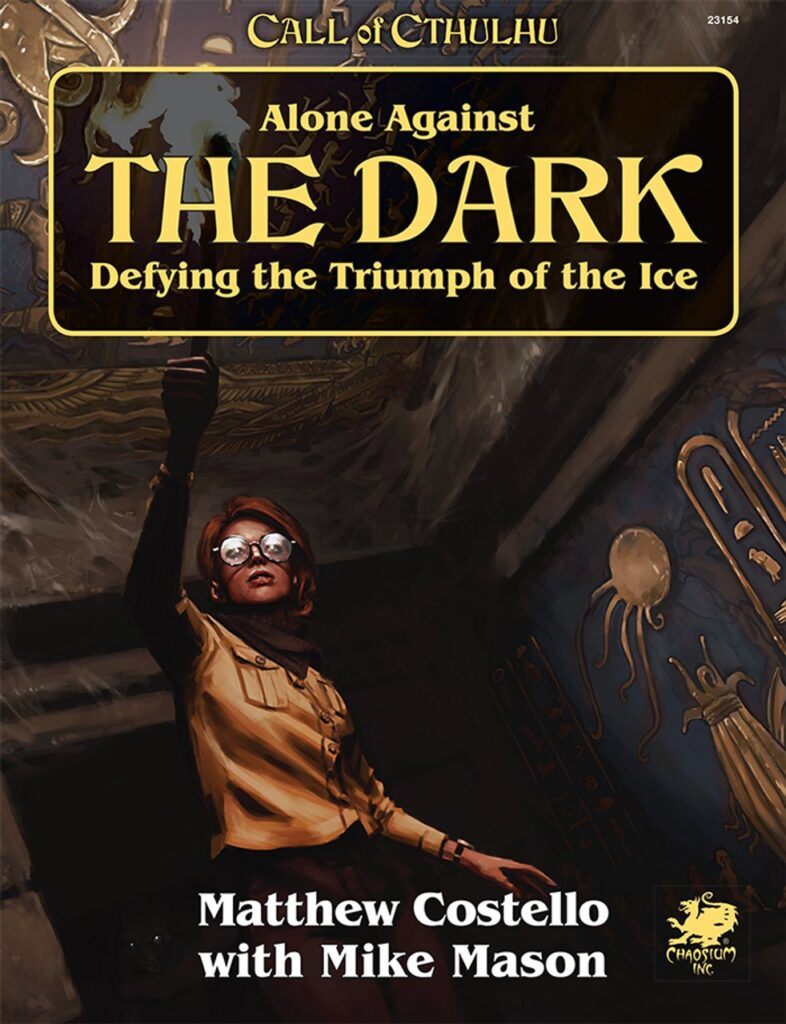In my A Game Per Year project, my goal has been to read one roleplaying game corebook for every year they’ve been published. However, I soon started to feel that it was hard to decipher how the games were really meant to be played. For this reason, I decided to start a parallel project, An Adventure Per Year, to read one roleplaying adventure for each year they’ve been published.

Alone Against the Dark is a solo adventure for Call of Cthulhu. You discover that a university colleague has been arrested in Athens and decide to investigate, traveling there only to discover a globe-spanning conspiracy culminating in Antarctica. Classic Call of Cthulhu stuff and you’ll recognize many of the story beats if you’re familiar with Masks of Nyarlathotep or Beyond the Mountains of Madness.
In terms of design, Alone Against the Dark is significantly more complex than many other books built on the “choose your own adventure” format. You’re using full Call of Cthulhu rules and can even use your own character. You have to keep track of time hour to hour and day to day and it really has an impact on play. Some events happen before or after specific dates and many establishments are not open at lunchtime.
Another unusual feature is lists of locations in different cities such as Arkham or Cairo. After you’re done with a location such as the library you can simply refer to the list of locations and choose another to go to, bypassing the usual “go to 133 if X, 533 if Y” structure entirely. This gives the adventure a feeling of free exploration I’ve never encountered in solo adventures before.
The adventure is absolutely deadly, with the chance to die lurking around every corner. My first brush with death came on the ship taking me from New York to Greece, and many followed. You can expect to go through a number of characters because the adventure has a lot of situations where you die if you fail a roll. Or even fail a single roll in a series.
One of the standout set pieces is a pyramid puzzle built so that you have a schematic of the pyramid and then small map pieces of the interior dungeon you place on the schematic as you explore it. Sort of like mapping in a roleplaying game except with a bit more help than usual. I admit that it stumped me and I was only able to finish the whole adventure through egregious cheating.